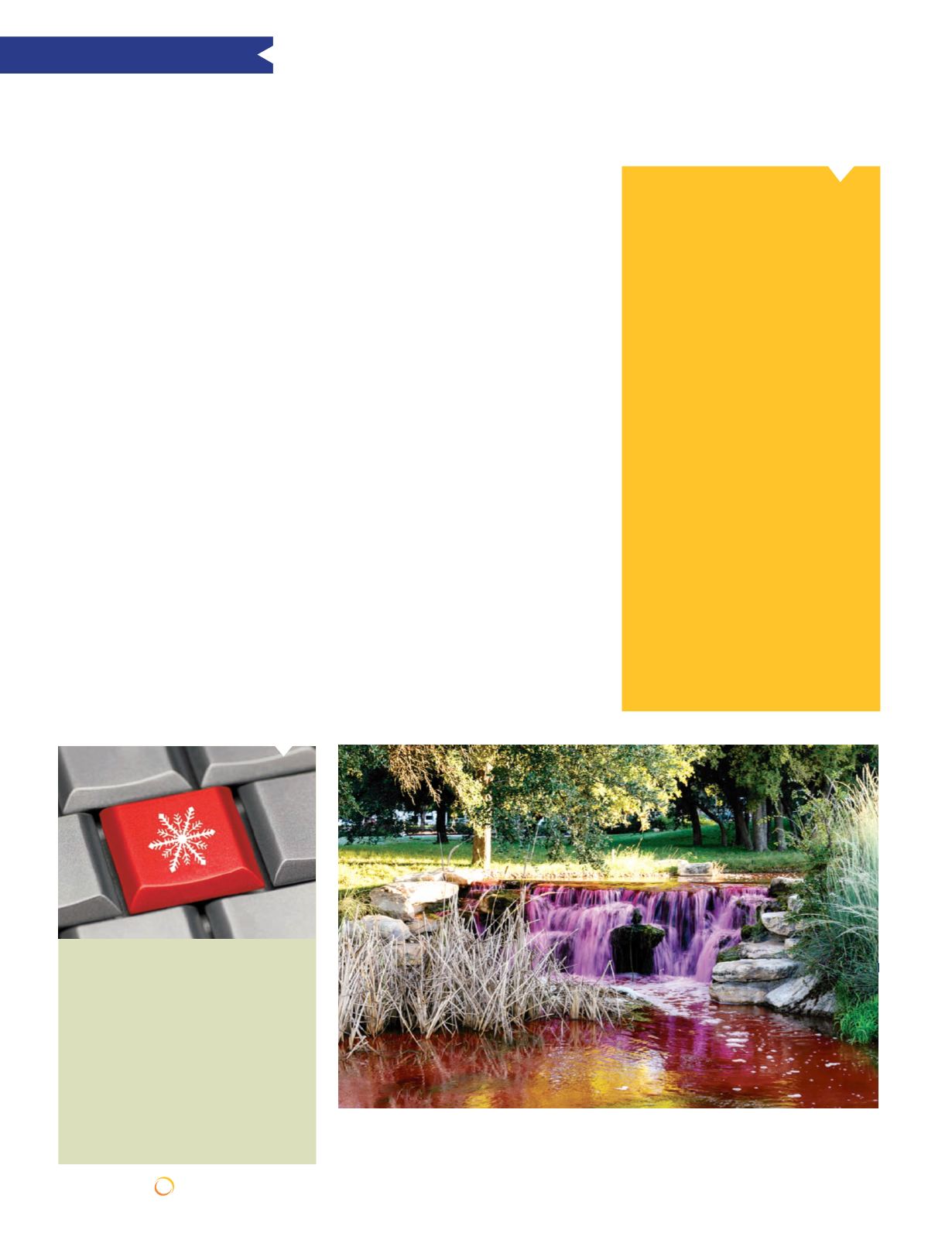
12 | SUNRAYS NOVEMBER 2014
ONLINE:
SCTXCA.ORG
CA NEWS
IN THE EVENT OF
INCLEMENT WEATHER
go to
or
our facebook page, www.
facebook . com/SunCi t y
TexasCommunityAssociation
for up-to-the-minute informa-
tion on CA facility closures or
delayed openings.
Unlike mammals, who are able to regu-
late their own body temperature (endo-
thermic), all reptiles and amphibians
are ectothermic. This means they do
not perspire, pant or have body fat or
hair to help protect them from external
climates. Therefore, reptiles and amphib-
ians can function only in a narrow range
of temperatures.
While humans must consume large
amounts of food to fuel their tempera-
ture regulating processes, reptiles are
capable of fasting for long periods, which
allows them to enter a state of hiber-
nation (or estivation) during the winter
months. Hibernation involves finding
an isolated spot where the snake can
spend the winter. These spots are usu-
ally caves or are underneath objects on
the ground; however, with 7,000 “caves”
(aka houses) in Sun City Texas, they may
seek out garages.
Because of this information, many people
might assume that all local snakes will
be in hibernation—not necessarily! The
past few winters have been very mild.
If a snake enters hibernation without a
sufficient store of body mass and the tem-
perature exceeds 55 degrees, that snake
may come out of hibernation to feed.
Rattlesnakes
At least three Sun City Texas residents
have experienced envenomation in the
last three years. The American Medical
Association (AMA) states that the only
response to a rattlesnake bite should
be to call 911, proceed to the nearest
hospital and stay as calm as possible.
DO NOT:
1. Put a tourniquet above the bite.
2. Cut the skin at the bite.
3. Try to suck out the venom.
4. Drink alcohol.
5. Apply ice.
6. Take antihistamines.
Residents should not kill harmless
snakes;
this practice will reduce only
the competition for food and increase
our rattlesnake population. To have a
snake removed, call our resident reptile
removers, listed on the bottom of page 4
in every
Sun Rays
. Inexperienced resi-
dents put their lives in danger when they
try to kill or remove rattlesnakes. Also,
residents can call the City of Georgetown
Animal Control at 512-930-3592.
Where do snakes go in winter? Hint: Not as far as you think!
Submitted by the Wildlife Management Committee
What can we do to
prevent encounters?
1. Always carry a strong flash-
light when walking at night.
Residents often walk in the
streets at night, when rattle-
snakes absorb heat from
streets/driveways. Basking
snakes may be hard to see
in the dark.
2. Dogs react to snakes with cu-
riosity—keep dogs on a short
leash.
3. When moving rocks in your
landscape, use caution:
snakes may be hiding under
rocks.
4. Many snakes feed on rats
and mice. Remove things in
your landscape that attract
rodents.
5. Residents sometimes leave ga-
rage doors open or cracked.
Completely closing garage
doors will lessen the possibil-
ity of snake encounters.
Pink waterfalls adorned the golf courses at the Rally for the Cure golf tournament
on October 3. The Rally is an annual fundraiser for breast cancer awareness.
PHOTO BY JOHN JOHNSON


